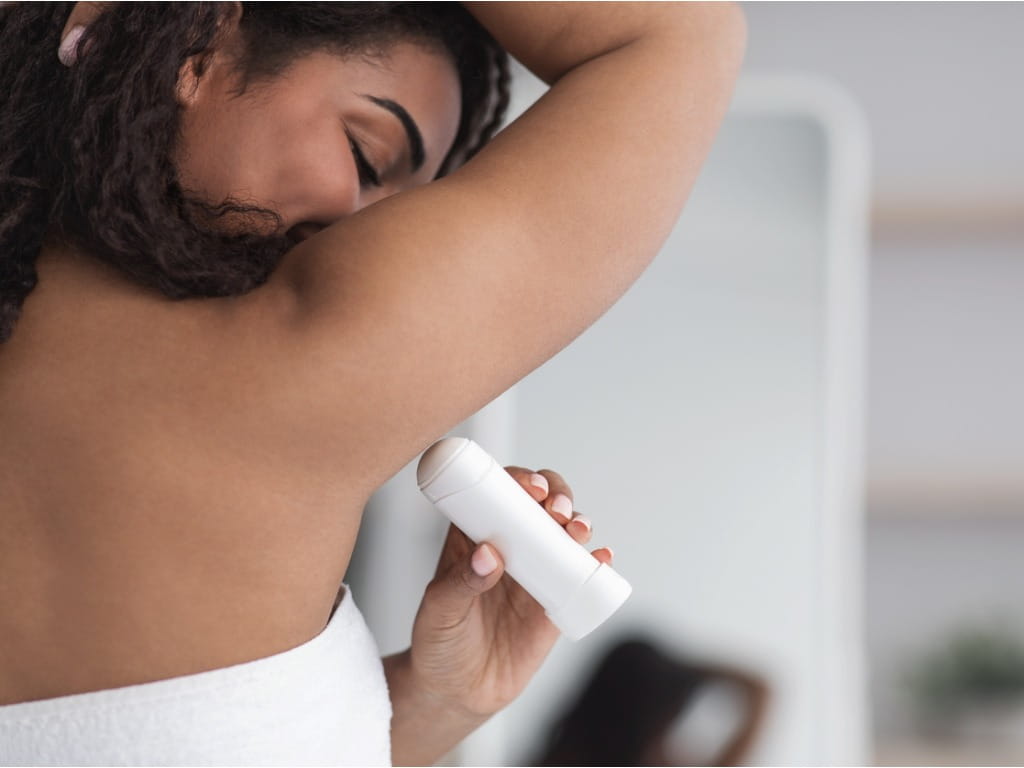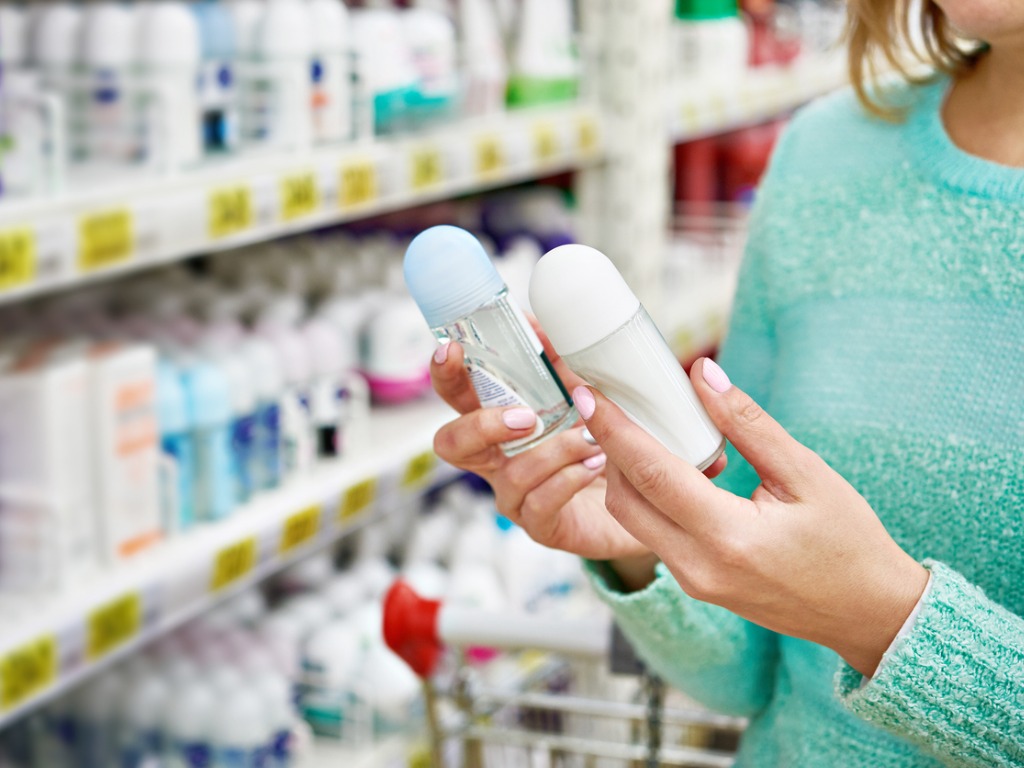Are Deodorant and Antiperspirant the Same Thing?

The Bottom Line
Deodorants work by controlling odor, while antiperspirants reduce the amount of sweat released from the body. Although some people question whether these products cause cancer or other diseases, deodorants and antiperspirants are considered to be safe when used as directed.

Why do I smell?
Development of body odor is a complex process that involves the interaction of bacteria on the skin, chemicals in sweat, and each person’s metabolism. The ability to smell body odors varies. Up to half of the population may be unable to smell certain chemicals that cause body odor. To reduce both body odors and sweating, many people choose to use deodorants or antiperspirants.
Deodorant vs. antiperspirant: What’s the difference?
Deodorants and antiperspirants are available separately or as combination products. Deodorants are used to reduce odor, while antiperspirants decrease sweating. Deodorants and antiperspirants are commonly sold as liquid roll-on, solid stick, or spray products and are intended for use on intact skin. Common ingredients in deodorants include the antibacterial agent triclosan, as well as triclocarban, quaternary ammonium compounds, and fragrances. Antiperspirants often contain aluminum or other metals that block the release of perspiration from sweat glands. While antiperspirants are typically used on underarm areas, deodorants can be applied to feet and other parts of the body.
Are deodorants cosmetic products?
According to the US Food and Drug Administration (FDA), deodorants are intended to rid the skin of odors and are considered to be cosmetic products. Antiperspirants, which affect the function of the human body by reducing sweating, are classified as drugs by the FDA. The ingredients in over-the-counter drugs such as antiperspirants are regulated by the FDA, whereas the ingredients in cosmetic products such as deodorants do not generally require FDA approval.
Are deodorants safe?
Deodorants and antiperspirants are safe when used as directed. However, because they often contain fragrances and other allergens, deodorants and antiperspirants are a common cause of cosmetic allergies. Essential oils, propylene glycol, and parabens are examples of ingredients in antiperspirants and deodorants that can cause allergic reactions in susceptible people.
Is a deodorant with aluminum bad for your health?
Deodorants typically contain lower levels of aluminum than antiperspirants. Since antiperspirants reduce perspiration, some scientists have questioned whether these products also prevent the release of toxins through sweat. However, there is no clear evidence that antiperspirant use is bad for your health or causes an increased exposure to toxins.
Does deodorant cause cancer?
Multiple scientific studies have investigated the potential link between deodorants, antiperspirants, and breast cancer. While some of these studies have found that aluminum is present in breast tissues and might play a role in the development of breast cancer, other studies have concluded that antiperspirant use might actually protect against breast cancer development. Currently, there is no conclusive evidence linking deodorant or antiperspirant use to breast cancer.
Why does deodorant stain shirts?
Aluminum and other ingredients in antiperspirants combine with human sweat to form a gel-like substance that causes yellow staining in the underarm area of shirts and other garments. These stains are often difficult to remove. Using stain pre-treatment products might help.
What should I do if someone licks or eats deodorant?
If you or a loved one have questions about exposures to deodorants or antiperspirants, contact Poison Control for guidance. Help from Poison Control is available online at www.poison.org and by phone at 1-800-222-1222. Both options are free, confidential, and available 24 hours a day.
Kelly Johnson-Arbor, MD
Medical Toxicologist
For media inquiries, please contact Krista Osterthaler at osterthaler@poison.org.
Poisoned?
Call 1-800-222-1222 or
Prevention Tips
- Talk to your doctor if you develop changes in the overall appearance, color, or shape of your breasts, or if you have questions or concerns about breast cancer.
- Use prescription and over-the-counter drugs, such as antiperspirants, only as directed on the package label.
- Seek medical attention if you develop skin rashes or itching after using deodorants or antiperspirants.
This Really Happened
For several years, a 42-year-old man experienced a recurrent itchy rash in his underarm areas. He was diagnosed with a condition called irritant dermatitis and was treated with topical corticosteroids, but the symptoms persisted. He was evaluated by a dermatology specialist and underwent extensive allergy testing, which revealed that he was allergic to multiple fragrances that are often present in cosmetic products. He was advised to use fragrance-free antiperspirants and deodorants, and after changing to these products he did not experience further rashes or itching in the armpits (from Zirwas & Moennich, 2008).For More Information
Antiperspirants and breast cancer risk. American Cancer Society. Revised October 29, 2022. Accessed February 16, 2023.
References
Benohanian A. Antiperspirants and deodorants. Clin Dermatol. 2001;19(4):398-405.
Darbre PD. Aluminium and the human breast. Morphologie. 2016;100(329):65-74.
®Zirwas MJ, Moennich J. Antiperspirant and deodorant allergy: diagnosis and management. J Clin Aesthet Dermatol. 2008;1(3):38-43.
Poisoned?
Call 1-800-222-1222 or
Prevention Tips
- Talk to your doctor if you develop changes in the overall appearance, color, or shape of your breasts, or if you have questions or concerns about breast cancer.
- Use prescription and over-the-counter drugs, such as antiperspirants, only as directed on the package label.
- Seek medical attention if you develop skin rashes or itching after using deodorants or antiperspirants.
